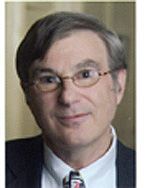The Jewish Gospels by Daniel Boyarin; ISBN 978-1-5955846-8-7©2010, $21.95, p. 200, including notes and index
By Fred Reiss, Ed.D

WINCHESTER, Callifornia –Thanks to the Jewish general and historian Josephus and the Greco-Jewish philosopher Philo, we know a great deal about the internecine spiritual arguments among the Jews from the mid-second century BCE through the end of the first century CE. The religious differences among the Jewish population are found in their interpretations of the as-yet uncanonized Holy Scriptures. This span of a hundred years or so, saw the rise of many Jewish sects, of which most are unimportant to later history, such as the Therapeutae, who flourished in northern Egypt and a number of individuals claiming to be the Messiah, such as Simon of Peraea, Athronges, and Menahem ben Judah.
Three Jewish sects had a profound impact at that time and in the case of the Pharisees, later history. The Sadducees, the priestly class, owing their allegiance to the Roman government, rejected, among other things, a belief in the Messiah, the Oral Law, which eventually became codified as the Talmud, and the idea of an afterlife. The Essenes, living monastic lives in the hills between Jerusalem and Masada, waited for the final battle between good and evil, led by the Jewish Messiah, which they expected to occur during their lifetime. Representing the thinking and practices of the majority of the Jewish population at the time, the Pharisees held beliefs such as observance of God’s laws as interpreted by the scribes, belief in a life after death, and the coming of a Messiah.
Daniel Boyarin, Professor of Talmudic Culture at the University of California, Berkeley, in his newest work, The Jewish Gospels, maintains that the Pharisees were divided in their beliefs about the Messiah, some arguing for his imminent coming and others asserting that the Messiah will not arrive until sometime in the distant future, but this was not the only disagreement among the Pharisees. Boyarin, quoting the Book of Mark, points out that Jesus was a Pharisaic Jew who rejected at least some Torah concepts being developed by the scribes, in this case the meaning of ritual purity. In Mark (7:15), Jesus says, “Nothing outside a man can make him ‘unclean’ by going into him. Rather, it is what comes out of a man that makes him ‘unclean’”. For Boyarin, the Jewish sect that later became Christianity is firmly rooted in the form of Pharisaic Judaism that rejects the washing of hands before eating in order to become ritually pure.
The main body of The Jewish Gospels focuses on certain scrolls available to first-century Jews, in particular, the Book of Daniel, the First Book of Enoch and the Fourth Book of Ezra. Boyarin compares the relevant Jewish ideas found in them, such as redemption, the Messiah as the Son of God, the suffering Messiah, and resurrection with the Book of Mark, showing that many of these abhorrent concepts in modern-day Judaism were at that time accepted Jewish beliefs.
Some readers of The Jewish Gospels might find the work repulsive because of the author’s conclusion that “Gospel Judaism was straightforwardly and completely a Jewish-messianic movement, and the Gospel the story of the Jewish Christ;” thereby giving tacit Jewish legitimacy to such belief systems as messianic Judaism. Nonetheless, The Jewish Gospels presents the reader with a clear, coherent and consistent interpretation of several apocalyptic works and how at least some Pharisaic Jews came to understand their meanings in ways differing from other Pharisees whose beliefs and rituals are now called rabbinic Judaism.
* *
Reiss is a retired public and Hebrew school teacher and administrator. He is the author of The Standard Guide to the Jewish and Civil Calendars; Ancient Secrets of Creation: Sepher Yetzira, the Book that Started Kabbalah, Revealed; and Reclaiming the Messiah. He may be contacted at fred.reiss@sdjewishworld.com